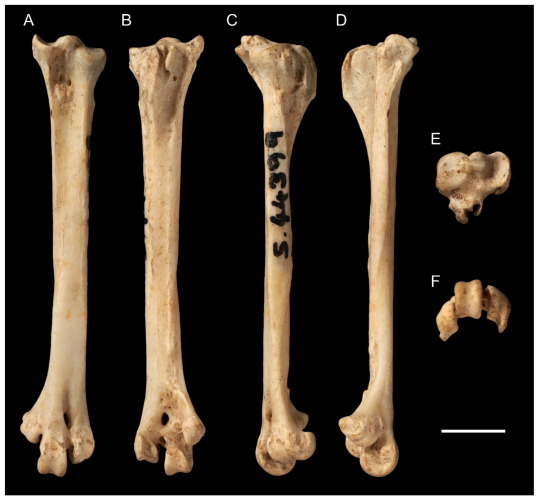#gallirallus australis
Text

A weka, or Māori Hen (Gallirallus australis) inspects stones in Aotearoa
by Gregory "Slobirdr" Smith
#weka#rails#birds#gallirallus australis#gallirallus#rallidae#gruiformes#aves#chordata#wildlife: aotearoa#wildlife: oceania
291 notes
·
View notes
Text
BOTD: Weka

Image credit: Jorg Hempel
Weka (Gallirallus australis)
The Weka is a flightless bird of the rail family endemic to New Zealand. There are four recognised subspecies of Weka, but only two of them are supported by genetic evidence. When food is plentiful, they can raise up to four broods throughout the year. Weka are significant to some Māori tribes.
#weka#gallirallus australis#flightless birds#endemic birds#endemic#birds of new zealand#new zealand#birdlife#wildlife#ornithology#bird facts#bird of the day#bird fact#bird fact of the day#birding#birdwatching#birds#bird
37 notes
·
View notes
Photo

A new variant has been added!
Weka (Gallirallus australis)
© indrabone
It hatches from broad, brown, characteristic, curious, endemic, extinct, large, new, orange, red, strong, and variable eggs.
squawkoverflow - the ultimate bird collecting game
🥚 hatch ❤️ collect 🤝 connect
1 note
·
View note
Text
De-novo genome assembly of four rails (Aves: Rallidae): a resource for comparative genomics
The rails are a phenotypically diverse family of birds that includes around 130 species and displays a wide distribution around the world. Here we present annotated genome assemblies for four rails from Aotearoa New Zealand: two native volant species, p[u]keko Porphyrio melanotus and mioweka Gallirallus philippensis, and two endemic flightless species takah[e] Porphyrio hochstetteri and weka Gallirallus australis. The quality checks and comparison with other rallid genomes showed that the new assemblies were of high quality and that the annotations could be trusted. Using the sequence read data, heterozygosity was found to be lowest in the endemic flightless species and this probably reflects their relatively small populations. This study significantly increases the number of available rallid genomes and will enable future genomic studies on the evolution of this family. http://dlvr.it/T0bxVM
0 notes
Text

Rallo Weka | Joseph Wolf (1820-1899)
1 note
·
View note
Text
Aptenorallus Kirchman et al., 2021 (new genus)

(An individual of Aptenorallus calayanensis, from Allen et al., 2004)
Meaning of name: Aptenorallus = flightless rail
Species included: A. calayanensis (Calayan rail, type species, previously in Gallirallus)
Age: Holocene (Meghalayan), extant
Where found: Forests on Calayan Island, Philippines
Notes: Aptenorallus calayanensis is a medium-sized rail that was only scientifically described in 2004. It is probably flightless or at least nearly so. It was formerly classified in the genus Gallirallus alongside the weka (G. australis) of New Zealand. However, a new study of rail phylogeny finds that the Calayan rail is not especially closely related to the weka. As a result, the authors coin the new genus Aptenorallus for the Calayan rail.
Reference: Kirchman, J.J., N.R. McInerney, T.C. Giarla, S.L. Olson, E. Slikas, and R.C. Fleischer. 2021. Phylogeny based on ultra-conserved elements clarifies the evolution of rails and allies (Ralloidea) and is the basis for a revised classification. Ornithology advance online publication. doi: 10.1093/ornithology/ukab042
169 notes
·
View notes
Photo

Weka also known as the Māori Hen or Woodhen (Gallirallus australis)
Able Tasman, New Zealand, 2020
4 notes
·
View notes
Photo

The South Island Takahē Bird
The South Island takahē, notornis, or takahē (Porphyrio hochstetteri), is a flightless bird indigenous to New Zealand and belonging to the rail family. It was thought to be extinct after the last four known specimens were taken in 1898. However, after a carefully planned search effort the bird was rediscovered by Geoffrey Orbell near Lake Te Anau in the Murchison Mountains, South Island, on 20 November 1948. The specific scientific name commemorates the Austrian geologist Ferdinand von Hochstetter.
Description:
The takahē is the largest living member of the family Rallidae. Its overall length averages 63 cm (25 in) and its average weight is about 2.7 kg (6.0 lb) in males and 2.3 kg (5.1 lb) in females, ranging from 1.8–4.2 kg (4.0–9.3 lb). The standing height is around 50 cm (20 in). It is a stocky bird, with reduced wings, strong legs and a massive bill.
The adult takahē is mainly purple-blue in colour, with a greenish back and inner wings. It has a red frontal shield and red-based pink bill. The legs are pink. Sexes are similar, the females being slightly smaller, but young birds have mainly pale brown plumage. Immatures have a pinkish bill with a bluish cast. This is a noisy species with a loud clowp call. The contact call is easily confused with that of the weka (Gallirallus australis), but is generally more resonant and deeper.
2 notes
·
View notes
Text
Gallirallus astolfoi Salvador et al., 2021 (new species)

(Type tarsometatarsus [fused ankle and foot bones] of Gallirallus astolfoi, from Salvador et al., 2021)
Meaning of name: astolfoi = for Astolfo [fictional knight in the Matter of France, who becomes trapped on a remote island in the epic poem Orlando Furioso]
Age: Holocene (Meghalayan)
Where found: Tangarutu Cave, Rapa Iti, French Polynesia
How much is known: A left tarsometatarsus (fused ankle and foot bones).
Notes: G. astolfoi was a rail, one smaller and slenderer than most other species that have been classified in the genus Gallirallus. It may have been flightless, considering that the loss of flight is extremely prevalent among rails of the Pacific Islands, though given that it is known only from a single hindlimb bone, this cannot be confirmed at present. Like numerous other island birds that went extinct in recent times, G. astolfoi was likely wiped out by human activity, such as habitat destruction and the introduction of invasive predators.
Following recent studies on rail phylogeny, some taxonomists have split Gallirallus into multiple genera, leaving only the weka (G. australis) and sometimes the New Caledonian rail (G. lafresnayanus) in Gallirallus proper. Under this classification, the genus assignment of G. astolfoi will likely need to be reassessed.
Reference: Salvador, R.B., A. Anderson, and A.J.D. Tennyson. 2021. An extinct new rail (Gallirallus, Aves: Rallidae) species from Rapa Island, French Polynesia. Taxonomy 1: 448–457. doi: 10.3390/taxonomy1040032
45 notes
·
View notes